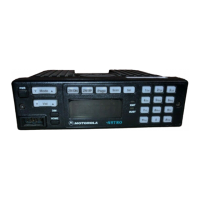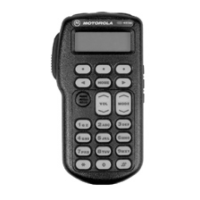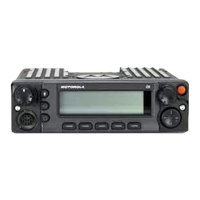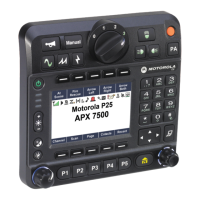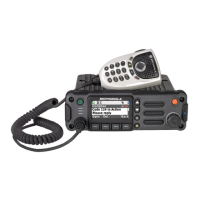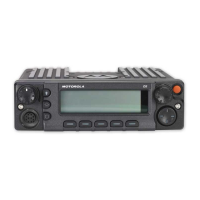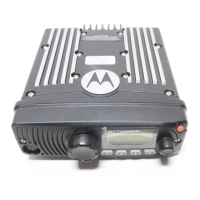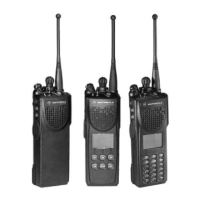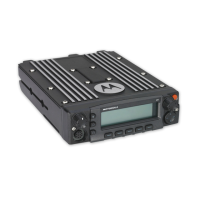September 5, 2008 6881076C25-E
3-22 Theory of Operation: ASTRO Spectra VOCON Board
These samples are then input to a transmit D/A, which converts the data to an analog waveform.
This waveform is the modulation out signal from the ADSIC ports, VVO and VRO. These signals are
both sent to the command board, where they go through a gain stage and then to the VCO and
Synthesizer. VVO is used primarily for audio frequency modulation; VRO is used to compensate for
low-frequency response to pass Digital Private Line (DPL) modulated signals.The transmit side of
the transceiver is virtually identical to a standard analog FM radio.
Also required is the 2.4 MHz ODC signal from the ABACUS II IC. Although the ABACUS II IC
provides receiver functions, it is important to note that this 2.4 MHz reference is required for all of the
ADSIC operations.
3.3.6 Controller Bootstrap and Asynchronous Buses
The SB9600 bus (see Figure 3-11 on page 3-23) is an asynchronous serial communication bus,
utilizing a Motorola proprietary protocol. It provides a means for the MCU to communicate with other
hardware devices. In the ASTRO Digital Spectra radio, it communicates with hardware accessories
connected to the accessory connector and the remote interface board.
The SB9600 bus utilizes the UART internal to the MCU, operating at 9600 baud. The SB9600 bus
consists of LH/TX_Data (J501-18), LH/RX_Data (J501-17), and Busy_RTS (J501-20) signals.
LH/TX_Data and LH/RX_Data are the SCI TXD and RXD ports (U204-PD0 and PD1), respectively.
Busy_RTS (U204-PA3) is an active-low signal, which is pulled low when a device wants control of
the bus.
